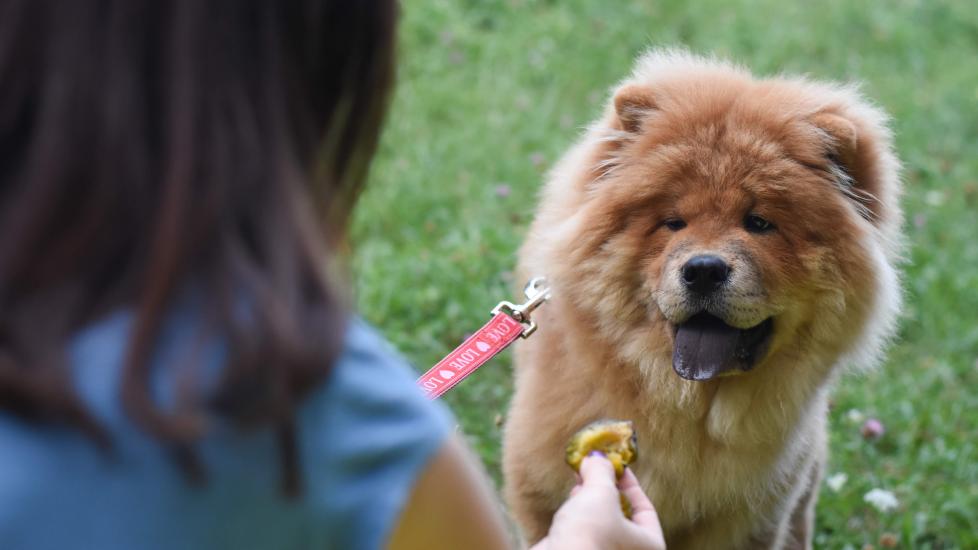Can Dogs Eat Plums?
NOTE: Always check with your veterinarian first before giving your dog any new foods, especially “people foods.” What might be OK for one dog might not be good for your dog, depending on multiple factors, such as their age, health history, health conditions, and diet. Dogs on prescription diets should not be fed any food or treats outside the diet.
Plums are a delicious fruit to snack on. But can dogs eat plums? These juicy purple fruits are mostly made up of water and sugar, along with fiber, antioxidants, and other vitamins. When fed in moderation as an occasional treat, it’s OK to share plums with your dog—as long as the pits are removed.
While plums are considered a safe treat for dogs, you’ll want to keep a few tips in mind before offering the fruit to your pooch.
Are Plums Good for Dogs?
Plums are a good source of fiber, vitamins A and C, and potassium—all nutrients that are beneficial for dogs and humans alike. Including a few small bites of plum into your dog’s treat routine could help your pooch’s digestion.
But go slow! As with most other kinds of fruit dogs can eat, plums are mostly water, fiber, and sugar. Dogs who have sensitive stomachs or are prone to digestive issues may want to steer clear. Too much fiber can cause an upset stomach or diarrhea, and the high sugar content can contribute to obesity.
For healthy adult dogs, plums are safe in moderation when prepared appropriately. Just be sure to remove the pit before sharing with your dog. In addition to their danger as a choking hazard, plum pits and stems are toxic to dogs.
As with any new food, it's always best to ask your vet about giving your dog a plum. Your vet can offer advice on what foods are OK for your pet, especially if they have health issues or allergies.
Can Plums Be Bad for Dogs?
Generally speaking, plums are safe for dogs to eat in moderation as an occasional treat. But there are some risks.
Namely, always make sure to remove the pit of the plum. Plum pits are toxic to dogs and can also cause your pooch to choke or create an intestinal blockage. If your dog does ingest a plum pit by accident, contact your vet immediately.
You should also limit the amount of plum shared with your dog. Anything more than a few small bites could cause digestive issues such as vomiting or diarrhea. Giving your dog too much fruit and other high-sugar items can also lead to weight gain and other health issues over time. Start slow, and only offer your dog a few small bite-sized pieces of the fruit until you know how their digestive system will react.
My Dog Ate a Plum Pit. Now What?
It’s possible for a plum pit to become a choking hazard or create an obstruction in your dog’s digestive systems. If your dog ate a plum pit, monitor them closely for any signs of illness, including:
-
Vomiting
-
Loss of appetite
-
Weakness/lethargy
-
Diarrhea
-
Weight loss
If your dog is choking or has a blockage, seek emergency medical attention. Signs of an intestinal blockage can include vomiting, diarrhea, abdominal pain, and loss of appetite.
Can Dogs Eat Prunes?
Prunes are dried plums, so they are essentially the same fruit. But they are even higher in sugar than fresh plums, so they’re not a great option for dogs.
If Fido eats a prune that fell to the floor by accident, he’ll probably be fine. Just don’t plan to use prunes as treats—in addition to the sugar, their high fiber content means prunes may cause your dog to experience gas or other digestive discomfort. Opt for small bites of fresh plum or another fruit altogether.
How to Safely Feed Your Dog Plums
When introducing any new food into your dog’s diet, moderation is key. Once you remove the pit and stem, cut the plum into small bites for your dog. Never let your dog eat a plum without removing the pit first.
Here’s how to safely feed your dog plum:
-
Wash the fruit and remove the pit and stem before feeding your dog the flesh of the plum.
-
Cut it into small, bite-size pieces so it’s easier to eat.
-
Offer small bites as a treat or snack, not as a regular part of their diet.
-
Monitor your dog closely for any signs of toxicity or digestive issues after they’ve eaten the plum.
-
Call your vet with any concerns.
How Many Plums Can Dogs Eat Safely?
Here are some standard guidelines for feeding plums to a healthy, adult dog:
-
Extra-small dog (2–20 pounds) = 1–2 small pieces (or less than a teaspoon)
-
Examples: Yorkies, Chihuahuas, Pomeranians, Pugs
-
-
Small dog (21–30 pounds) = 3–4 small pieces (about a teaspoon)
-
Medium dog (31–50 pounds) = 5–6 small pieces (about 1 tablespoon)
-
Examples: Basset Hounds, Border Collies, Australian Cattle Dogs
-
-
Large dog (51–90 pounds) = 7–8 small pieces (about 2 tablespoons)
-
Examples: Pit Bulls, German Shepherds, Labrador Retrievers, Australian Shepherds
-
-
Extra-large dog (91+ pounds) = 10 small pieces or less (no more than ¼ cup)
-
Examples: Newfoundlands, Bernese Mountain Dogs, Saint Bernards, Great Pyrenees
-
Other Fruits Dogs Can Eat
There are plenty of other fruits dogs can enjoy in addition to plums, including:
Remember that not all fruit is safe for dogs to eat. Some fruits, such as grapes, should be avoided. Always talk to your vet before introducing new foods to your dog's bowl, as they may have recommendations that take into account your pet’s health, age, and weight.
Featured Image: Adobe/Ivan
